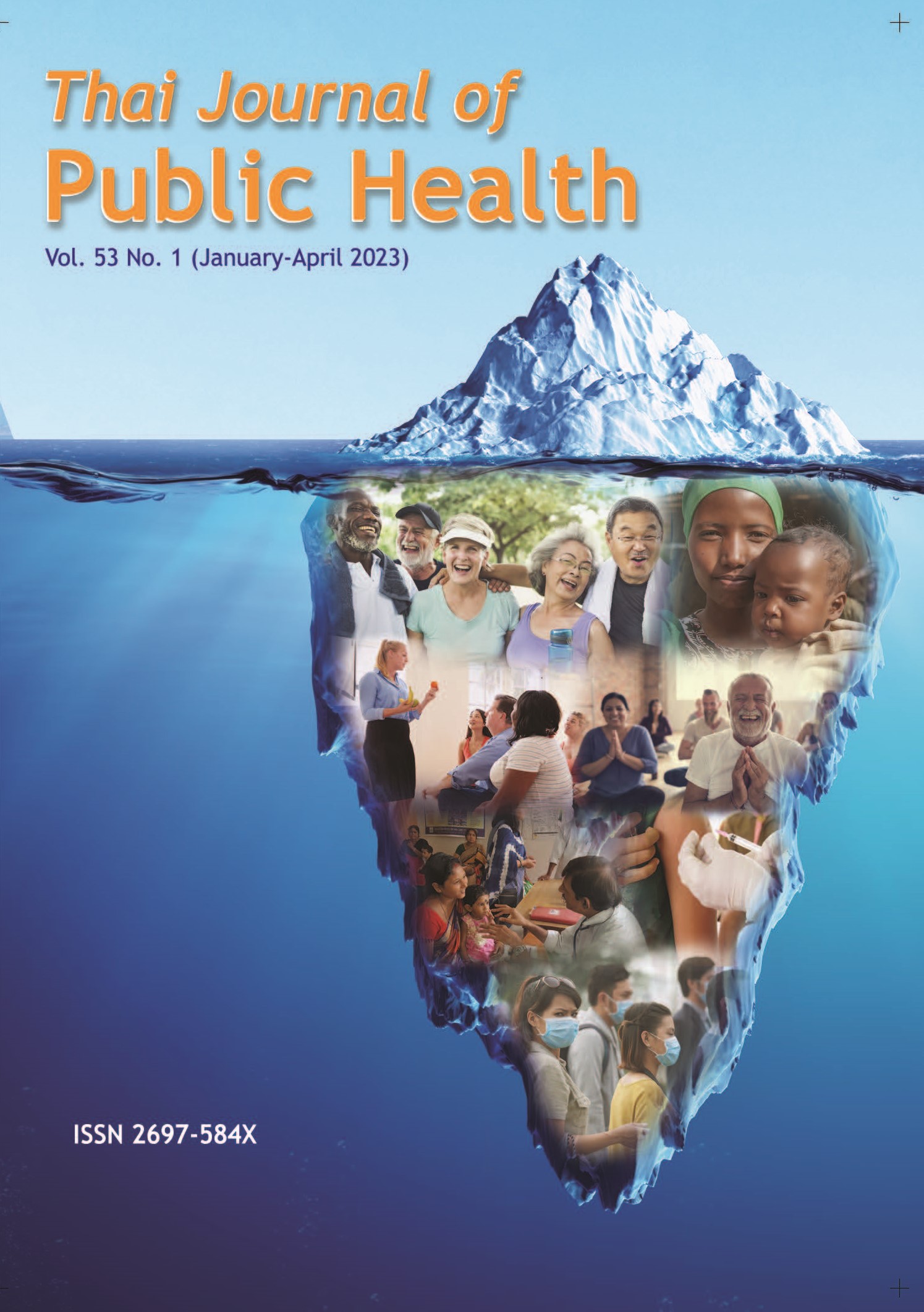The Relation between Dominate Body Elements in the Human Body with Using Prasaprohyai extract capsule for Treating Allergic Rhinitis Patients.
Keywords:
Prasaprohyai Extract, Allergic Rhinitis, Dominate Body Elements, Quality of LifeAbstract
Prasaprohyai drug has been announced in the National List of Essential Drugs. In vitro and animal studies have shown good anti-allergic and anti-inflammatory effects. The efficacy and safety of the treatment of allergic rhinitis has been studied. But there is still a lack of knowledge linking between Thai traditional medicine and modern medicine. The objective of this research was to study the relationship of primate elements with overall nasal symptoms and quality of life from the use of capsula extract in the treatment of allergic rhinitis. Participants were 69 men and women, taking 300 mg daily for 6 weeks. Results were assessed by a nasal generalization and quality of life scale. Assess safety through follow-up and laboratory testing. Analyze the data by categorizing the household element groups. A study comparing the efficacy of drugs over time according to the elemental group found that the severity of overall nasal symptoms was significantly reduced. When comparing the efficacy between the elemental groups, there was no statistical difference at the 3rd week, but there was a statistically significant difference at the 6th week. The effect between the elemental groups in the first aspect was nasal symptoms at week 6, statistically significant improvement in quality of life. And when comparing within each element group, it was found that all quality of life elements improved statistically significantly and most of each aspect of quality of life assessment tended to improve after drug use.
References
Rabin R L, & Vieths S. Global Atlas of Allergic Rhinitis and Chronic Rhinosinusitis_Regulation and Standardization of AIT extracts. In : Cezmi A. Akdis, Peter W. Hellings, Ioana Agache. editors. Global Atlas of Allergic Rhinitis and Chronic Rhinosinusitis. European Academy of Allergy and Clinical Immunology, 2015; 219-21.
Ruby Pawankar STH, G Walter, Canonica Richard F, Lockey Michael S Blaiss. WAO White Book on Allergy 2013 Update 2013.
Bunnag C, Jareoncharsri P, Tantilipikorn P, Vichyanond P, Pawankar R. Epidemiology and current status of allergic rhinitis and asthma in Thailand - ARIA Asia-Pacific Workshop report. Asian Pac J Allergy Immunol 2009; 27(1): 79-86.
Tongdee M, Dechapaphapitak N, Kafaksom T, Udomsubpayakul U, Wongsa C, & Laisuan W. Comparison of Quality of Life and Nasal Symptoms in Chronic Rhinitis Patients Between Before and After Treatment. Ramathibodi Medical Journal 2019; 42(2): 21-29. (In Thai)
Yamprasert R, Chanvimalueng W, Mukkasombut N, Itharat A. The Relation between Dominate Body Elements in the Human Body with Using Ginger Extract for Treating Allergic Rhinitis Patients. Thai Journal of Otolaryngology Head and Neck Surgery 2018; 19(2): 26-40. (In Thai)
Office of the Royal Institute, Department of Thai Traditional and Alternative Medicine Development. Dictionary of Traditional Thai Medicine and Pharmacy : Royal Society Edition 2016 on the auspicious occasion of His Majesty the King's accession to the throne. Bangkok: National Buddhism Office Printing. 2016; 1-612.
Traditional Thai Medicine Rehabilitation Foundation Ayurveda College (Cheewak Komaraphat). Original Thai medical textbook. (Medical Welfare) Pattana Edition, Part 1. Bangkok: Thai Color Printing House. 1998; 1-109
Mahajaroensiri S, Vannabhum M, Thamsermsang O, Iampornchai S, Akarasereenont P, Laohapand T. The development of evaluation form for present body elements (Present Dhat Chao Ruean) diagnosis in Thai Traditional Medicine. Siriraj Medical Bulletin. 2017; 10 (2): 65-73. (In Thai)
Announcement of the National Drug System Development Board on the National List of Essential Drugs B.E. 2556 (2013) in the Government Gazette, Volume 130, Special Part 126, Special Issue (dated September 30, 2013).
Itharat A, Chanvimalueng W, Ruangnoo S. Development for Prasaprohyai remedy extract as drugs for treatment allergic rhinitis patients (Research report on agricultural research development complete version). Pathum Thani : Faculty of Medicine Thammasat University. 2017; 1-180 (In Thai)
Pennapha S. Analytical Circle of Chao Ruean Elements. Institute of Thai Traditional Medicine Ministry of Public Health. 1993.
Houngiam K, Chanvimalueng W, Itharat A, Mukkasombut N, Chaiyawatthanananthn P. Quality of life of allergic rhinitis patients treated with ethanolic benjakul remedy extract compared with loratadine. Thammasat Medical Journal. 2019; 19(1): 36-45. (In Thai)
Khun Nitthesukkij (Nithes (Thomrat) Poomchusri). Ayurvedic Studies. (Traditional Medicine). (2nd edition). Bangkok: M.P.A., 1973; 85.
Rachawat P, Pinsornsak P, Itharat A. The relation between major elements in the human body with using Benjakul remedy extract for treating primary osteoarthritis of knee. Thammasat Medical Journal. 2016; 16(4): 578-88. (In Thai)
Bunnag C, Leurmarnkul W, Jareoncharsri P, Tunsuriyawong P, Assanasen P, & Pawankar R. Quality of life assessment in Thai patients with allergic rhinoconjunctivitis using the SF-36 questionnaire (Thai version). Rhinology, 2005; 43(2): 99-103.
Downloads
Published
Issue
Section
License

This work is licensed under a Creative Commons Attribution-NonCommercial-NoDerivatives 4.0 International License.
Creative Commons License CC-BY-ND


